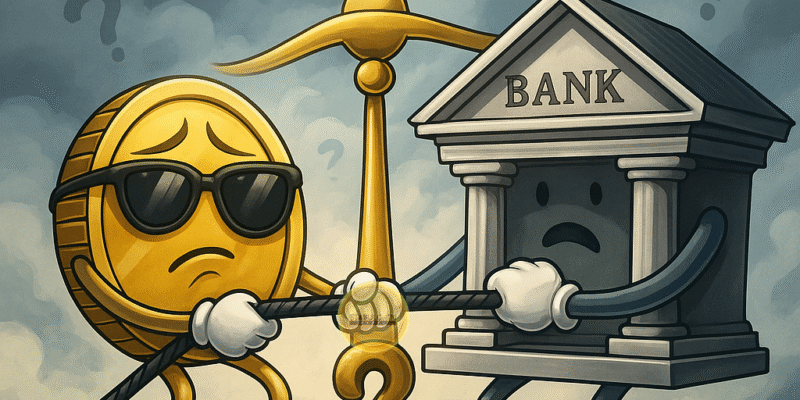Stablecoins vs traditional banking is quickly becoming one of the biggest debates in finance and the way people think about money is changing. For decades, banks have been the default option for savings, payments, and transfers. Now, stablecoins vs traditional banking has become one of the biggest debates in finance. The rise of stablecoins raises a simple question: could they one day replace the banks?
Stablecoins are digital tokens designed to hold a stable value, often pegged to national currencies like the dollar or naira. They move quickly across borders, cost less to transfer, and work with nothing more than a smartphone and internet connection. For millions of people who struggle with high fees or limited access to banking, that accessibility is a real game-changer.
Traditional banks, on the other hand, still dominate because they provide trust, regulation, and services that stablecoins have not yet matched. Savings accounts come with deposit insurance. Banks issue loans, mortgages, and credit products. For most people, these are everyday essentials that digital money does not fully cover.
The comparison of stablecoins vs traditional banking highlights both strengths and gaps. Stablecoins excel in speed and global reach, but questions remain about regulation and security. Banks offer stability and structure, but they often feel slow and costly in a digital-first world.
Experts suggest the future may not be about one replacing the other but about integration. Imagine a system where your bank account links directly to stablecoins for instant cross-border payments, while still offering insurance and credit. Some banks are already experimenting with tokenised deposits and stablecoin partnerships, showing that collaboration is possible.
For users, the answer may depend on what matters most. If the priority is sending money across borders cheaply and instantly, stablecoins already win. If the goal is long-term savings or access to credit, banks remain essential. The two worlds may continue to coexist until stablecoins mature enough to carry the full range of financial services.
The debate of stablecoins vs traditional banking is far from settled, but one thing is certain: money is changing. As adoption grows, the role of banks will also evolve. Whether as rivals or partners, both will shape how people save, spend, and transfer value in the years to come.

Comments